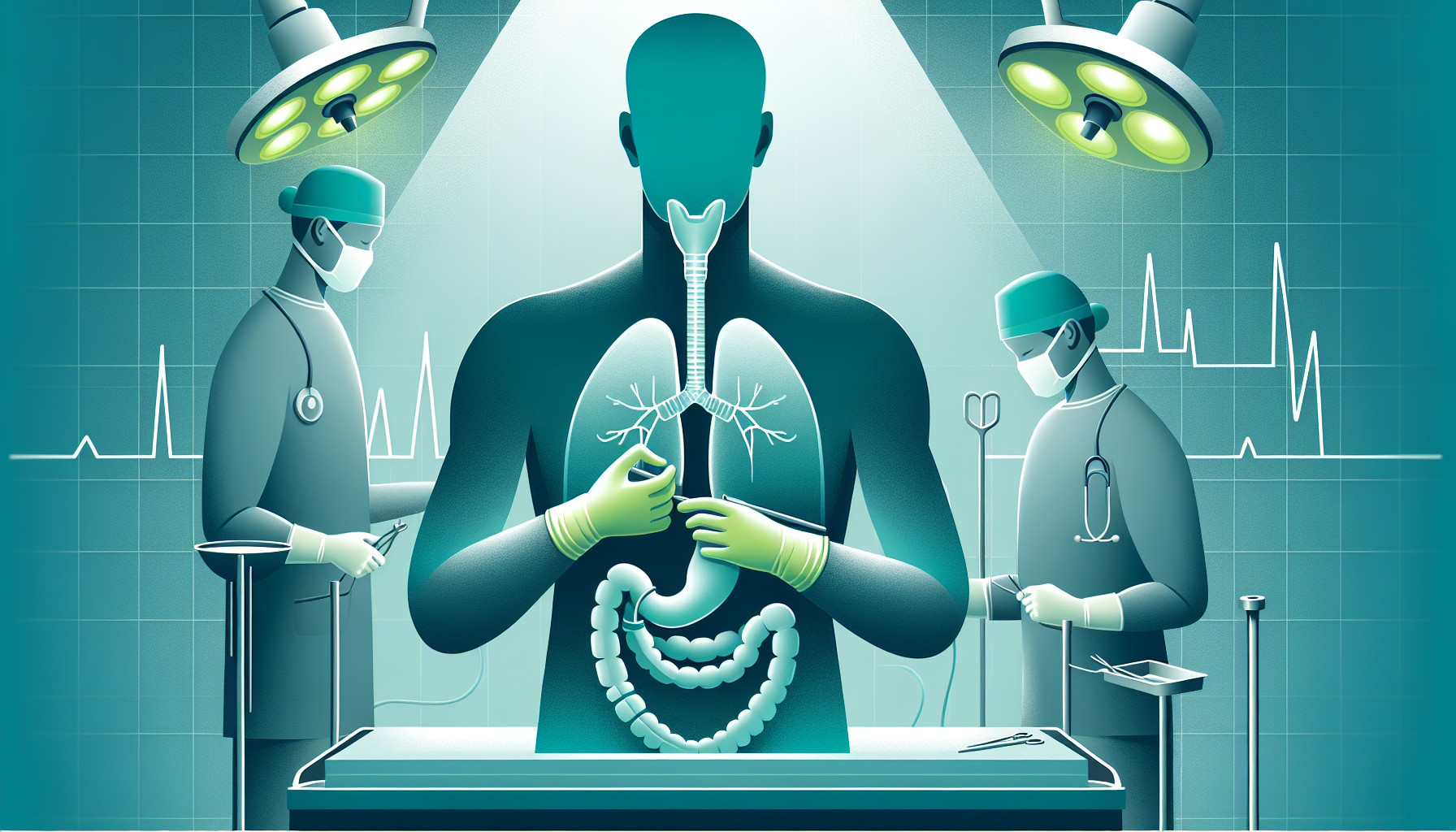Our Summary
This study examined the causes and treatments of hiatal hernias, which are protrusions of the stomach through the diaphragm, in patients who had previously undergone esophagectomy (removal of the esophagus). This was done by looking at the cases of 161 patients who had undergone this surgery due to esophageal cancer between 2018 and 2023.
The researchers found that hiatal hernias occurred in 3.7% of these patients, with a higher rate in those who had undergone minimally invasive surgery (4.4%) compared to those who had open surgery (2.9%). The hernias developed within 1-15 months after the esophagectomy and were more common in men than women.
Two of the patients had to have emergency surgery due to complications, three had planned surgery, and one is currently being monitored. Two patients showed no symptoms, and unfortunately, one patient died after emergency surgery due to a strangulated hernia and respiratory failure.
The study concluded that hiatal hernias are twice as likely to occur after minimally invasive esophagectomies. The researchers suggest that active surgical intervention should be considered for symptomatic hernias due to the high risk of strangulation and the need for emergency intervention. They also found that avoiding wide dissection of the diaphragm, transection of the left diaphragmatic crus, and using high abdominal pressure during the laparoscopic stage can reduce the occurrence of this complication.
FAQs
- What is the rate of hiatal hernias occurring in patients who have undergone esophagectomy?
- What are the recommendations from the researchers to reduce the occurrence of hiatal hernias after esophagectomy?
- What is the difference in occurrence of hiatal hernias between patients who had minimally invasive esophagectomy and those who had open surgery?
Doctor’s Tip
A helpful tip a doctor might tell a patient about esophagectomy is to be aware of the potential risk of developing a hiatal hernia post-surgery. Patients should be vigilant for symptoms such as chest pain, difficulty swallowing, or reflux, and should promptly report any concerning symptoms to their healthcare provider. Additionally, patients should follow their doctor’s recommendations for post-operative care and attend follow-up appointments to monitor for any potential complications.
Suitable For
Patients who have undergone esophagectomy, particularly minimally invasive esophagectomy, are at higher risk for developing hiatal hernias. These patients should be monitored closely for symptoms of hiatal hernias, such as reflux, chest pain, difficulty swallowing, and regurgitation. If symptomatic, surgical intervention may be necessary to prevent complications such as strangulation and respiratory failure. It is important for healthcare providers to be aware of this potential complication in patients who have undergone esophagectomy and to consider preventive measures during surgery to reduce the risk of hiatal hernias.
Timeline
In summary, before esophagectomy, a patient typically experiences symptoms of esophageal cancer such as difficulty swallowing, chest pain, weight loss, and fatigue. They may undergo various tests and scans to diagnose the cancer before undergoing surgery.
After the esophagectomy, the patient may experience complications such as hiatal hernias, which can develop within 1-15 months post-surgery. Symptoms of a hiatal hernia may include chest pain, heartburn, difficulty swallowing, and abdominal pain. In some cases, emergency surgery may be required to address complications such as strangulation of the hernia.
Overall, the study highlights the importance of monitoring patients post-esophagectomy for potential complications such as hiatal hernias and considering surgical intervention for symptomatic cases to prevent serious complications. The researchers also provide recommendations for reducing the risk of hiatal hernias, such as avoiding certain surgical techniques during the esophagectomy procedure.
What to Ask Your Doctor
Some questions a patient should ask their doctor about esophagectomy and the potential risk of hiatal hernias include:
- What are the potential complications of esophagectomy, including the risk of developing a hiatal hernia?
- How common are hiatal hernias in patients who have undergone esophagectomy?
- What are the symptoms of a hiatal hernia, and how can it be diagnosed?
- What are the treatment options for a hiatal hernia, and when is surgery necessary?
- Are there any specific factors that may increase my risk of developing a hiatal hernia after esophagectomy?
- How can the risk of developing a hiatal hernia be minimized during esophagectomy surgery?
- What should I do if I experience symptoms that could indicate a hiatal hernia after my esophagectomy?
- How often should I follow up with my doctor to monitor for the development of a hiatal hernia?
- Are there any lifestyle changes or precautions I should take to reduce my risk of developing a hiatal hernia after esophagectomy?
- What is the prognosis for patients who develop a hiatal hernia after esophagectomy, and what are the potential long-term effects?
Reference
Authors: Ryabov AB, Pikin OV, Khomyakov VM, Kolobaev IV, Abdulkhakimov NM. Journal: Khirurgiia (Mosk). 2024;(11):24-29. doi: 10.17116/hirurgia202411124. PMID: 39584510
